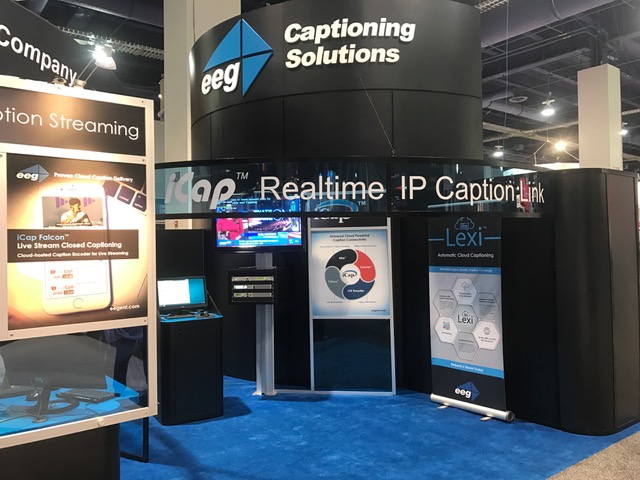It was terrific to see so many of our friends, and make a lot of new ones, at NAB Show 2017 in Las Vegas.
As you may be aware, shifts on many levels affect the entire content creation ecosystem that captioning exists in every year, with new developments seemingly at every turn. With this in mind, we would like to share our 3 major observations from NAB 2017 in the captioning/accessibility space:
-
State of the NAB Show – Long considered a barometer of the broadcast industry’s general health, the convention’s energy level matters. While the strong attendance at this year’s show was encouraging, that isn’t the only factor to consider. Just as importantly, we saw a healthy level of adaptation to new technologies and changing business environments. There is rapid change everywhere, but it isn’t being met with trepidation – to the contrary, the industry professionals we talked to have a sense of confidence that they’re meeting the challenges. Throughout the broadcast industry and all forms of content creation, people are prepared to engage new solutions and approaches as they become available.
-
Captioning Regulations are Changing in Real Time -- Captioning is a part of the viewing experience that is specifically subject to FCC regulation, with certification of compliance and accuracy all driven by the American Disabilities Act (ADA). Within those certainties, however, the requirements that content creators are subject to are surprisingly fluid. One reality of the current regulatory environment is a shift in how caption quality is defined and therefore enforced. For instance, while caption “accuracy” has long been sought for, that parameter is not as easy to measure and define as “synchronicity”. There are varying approaches and accompanying costs that video content providers must account for in addressing each aspect of caption quality. The legal interpretations, which aren’t always clear cut, often affect the workflows that are planned and how efficient they turn out to be. EEG is always monitoring the captioning ecosystem, crafting solutions to help content creators hit these moving targets. Cloud-hosted captioning solutions like EEG’s iCap Falcon and Lexi Automatic Captioning service are constantly updated to address the very latest standards and expectations.
-
Live Video Streaming is Accelerating – While the number of broadcast media outlets, in terms of national networks and local stations, remain constant, there has been a great deal of live video streaming growth in other areas. With this growth comes an increased desire to include captioning in the viewer experience, mandated or not. At NAB 2017, we saw increasingly engaged sectors including corporate video (tech, social media, finance), and municipal (city/county/state government, school boards). These organizations create video not as an end in itself, but strategically to communicate externally and internally in support of their core mission. Inclusiveness is key to effective use of video as an enabler, and many departments want to go live to web platforms with the goal of 100% captioning from day one. With that in mind, producers in these segments must select an online video platform that fully supports captioning. With the extreme ease of integration that Falcon offers, EEG secured several new partnerships at NAB 2017 with enterprise video platforms, ensuring that the answer to the closed captioning capability question is a definite “yes.”

